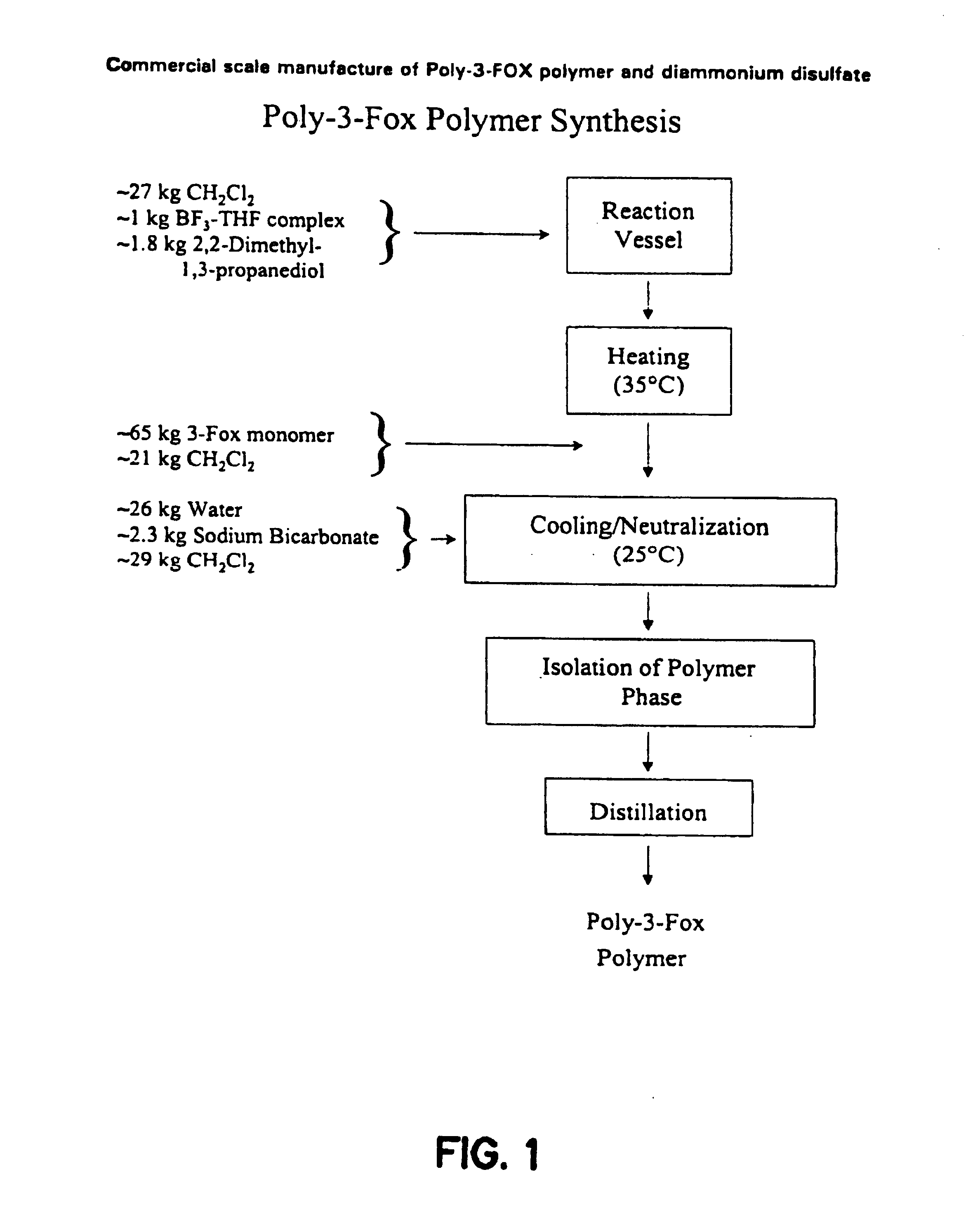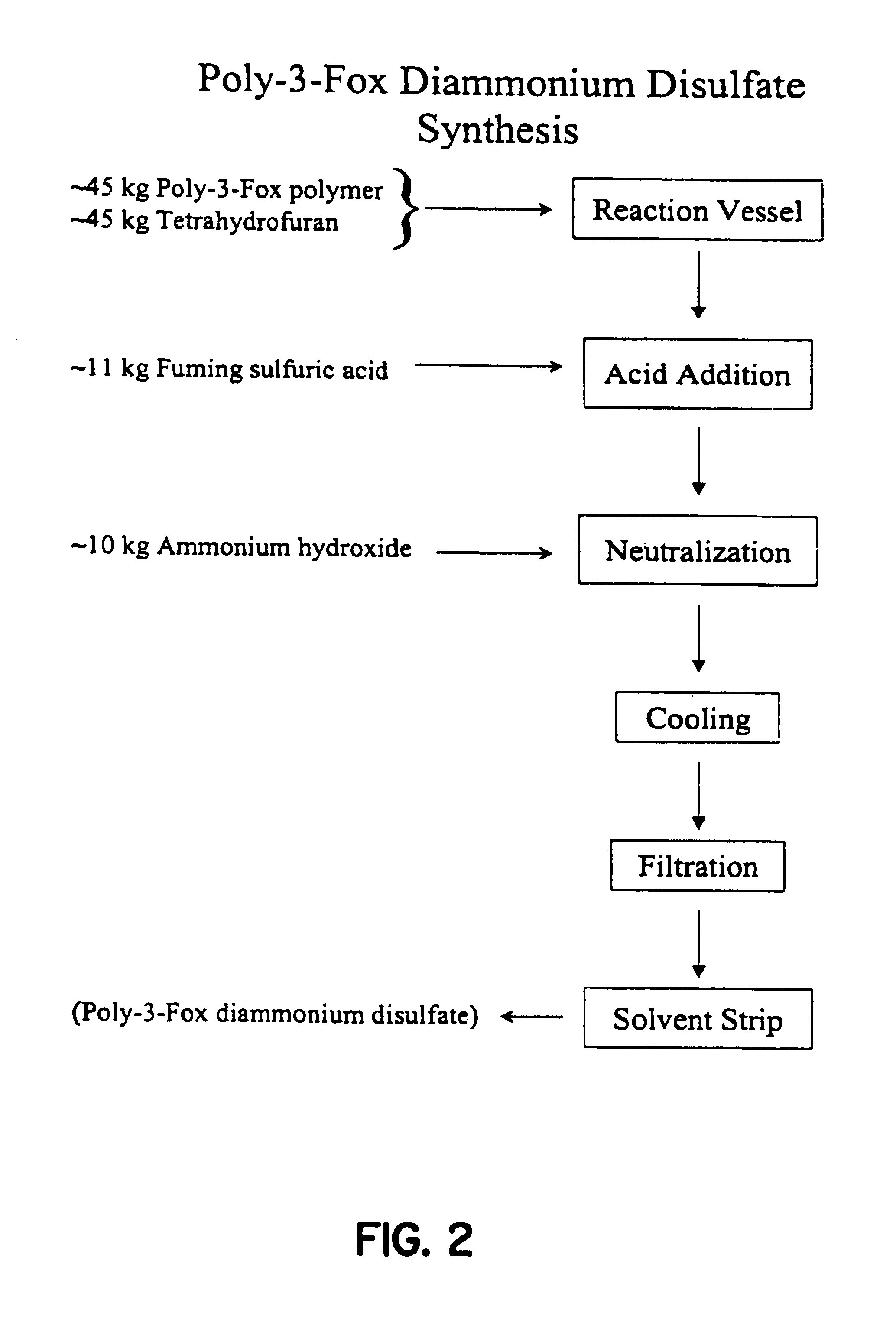Polymeric surfactants derived from cyclic monomers having pendant fluorinated carbon groups
a technology of cyclic monomers and surfactants, which is applied in the direction of polishing compositions, non-fibrous pulp addition, aqueous dispersions, etc., can solve the problems of limiting their utility, and achieve the effect of improving wetting, or flow, or leveling properties, and little propensity
- Summary
- Abstract
- Description
- Claims
- Application Information
AI Technical Summary
Benefits of technology
Problems solved by technology
Method used
Image
Examples
example m1
Preparation of 3-FOX Monomer 3-(2,2,2-Trifluoroethoxymethyl)-3-Methyloxetane
[0041]Synthesis of the 3-FOX oxetane monomer is performed as follows:
[0042]A dispersion of 50 weight percent (2.8 grams, 58.3 mmol) sodium hydride in mineral oil, was washed twice with hexanes and suspended in 35 milliliters of dimethyl formamide. Then, 5.2 grams (52 mmol) of trifluoroethanol was added and the mixture was stirred for 45 minutes. A solution of 10.0 grams (39 mmol) of 3-hydroxymethyl-3-methyloxetane p-toluenesulfonate in 15 milliliters of dimethyl formamide was added and the mixture was heated at 75° C.-85° C. for 20 hours, when 1H MNR analysis of an aliquot sample showed that the starting sulfonate had been consumed.
[0043]The mixture was poured into 100 milliliters of ice water and extracted with 2 volumes of methylene chloride. The combined organic extracts were washed twice with water, twice with 2 weight percent aqueous hydrochloric acid, brine, dried over magnesium sulfate, and evaporated...
example m2
Preparation of 7-FOX Using PTC Process 3-(2,2,3,3,4,4,4-Heptafluorobutoxymethyl)-3-Methyloxetane
[0044]A 2 L, 3 necked round bottom flask fitted with a reflux condenser, a mechanical stirrer, a digital thermometer and an addition funnel was charged with 0.3-bromomethyl-3-methyloxetane (351.5 g, 2.13 mol), heptafluorobutan-1-ol (426.7 g, 2.13 mol), tetrabutylammonium bromide (34.4 g) and water (85 mL). The mixture was stirred and heated to 75° C. Next, a solution of potassium hydroxide (158 g, 87% pure, 2.45 mol) in water (200 mL) was added and the mixture was stirred vigorously at 80°-85° C. for 4 hours. The progress of the reaction was monitored by GLC and when GLC analysis revealed that the starting materials were consumed, the heat was removed and the mixture was cooled to room temperature. The reaction mixture was diluted with water and the organic layer was separated and washed with water, dried and filtered to give 566 g (94%) of crude product. The crude product was transferred...
example m3
[0050]Sodium hydride (50% dispersion in mineral oil, 18.4 g, 0.383 mol) was washed with hexanes (2×) and was suspended in DMF (200 mL). Then trifluoroethanol (38.3 g, 0.383 mol) was added dropwise over 45 min while hydrogen gas was evolved. The mixture was stirred for 30 min and a solution of 3,3-bis-(hydroxymethyl)oxetane di-p-toluenesulfonate (30.0 g, 0.073 mol) in DMF (50 mL) was added. The mixture was heated to 75° C. for 64 h when 1H NMR analysis of an aliquot showed that the starting sulfonate had been consumed. The mixture was poured into water and extracted with methylene chloride (2×). The combined organic extracts were washed with brine, 2% aqueous HCl, water, dried (MgSO4), and evaporated to give 17.5 g (100%) of 3,3-bis-(2,2,2-trifluoroethoxymethyl)oxetane as an oil containing DMF (−1; 1H NMR δ 3.87 (s 4H), 3.87 (q, J=8.8 Hz, 4H), 4,46 (s, 4H); 13C NMR δ 43.69, 68.62 (q, J=35 Hz), 73.15, 75.59, 123.87 (q, J=275 Hz); 19F NMR δ−74.6 (s). Anal. Calcd, for C9H12F6O3; C, 38.3...
PUM
| Property | Measurement | Unit |
|---|---|---|
| average degree of polymerization | aaaaa | aaaaa |
| average degree of polymerization | aaaaa | aaaaa |
| average degree of polymerization | aaaaa | aaaaa |
Abstract
Description
Claims
Application Information
 Login to View More
Login to View More - R&D
- Intellectual Property
- Life Sciences
- Materials
- Tech Scout
- Unparalleled Data Quality
- Higher Quality Content
- 60% Fewer Hallucinations
Browse by: Latest US Patents, China's latest patents, Technical Efficacy Thesaurus, Application Domain, Technology Topic, Popular Technical Reports.
© 2025 PatSnap. All rights reserved.Legal|Privacy policy|Modern Slavery Act Transparency Statement|Sitemap|About US| Contact US: help@patsnap.com



